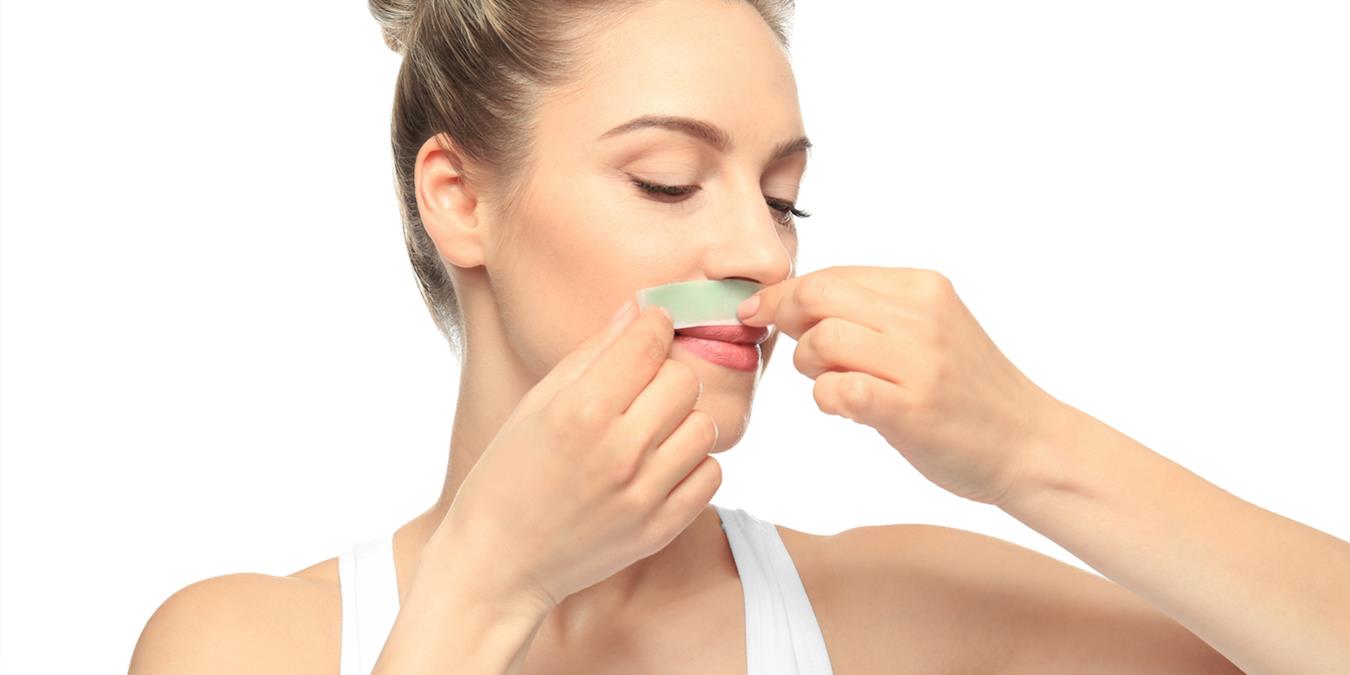It’s completely natural for women to get hair on their upper lip, and each person will experience different patterns and colours of hair growth. For some women, they may prefer to have their upper lip hair removed. If you’re worried about facial hair affecting your beautiful smile, read on for our top upper lip hair removal tips!
What’s the best way to remove upper lip hair?
There are several different methods that you can use to remove upper lip hair depending on your skin type, budget and how long you want the effects to last.
Waxing may be one of the most efficient and convenient ways to remove upper lip hair. Waxing is a form of epilation, which means it removes hair at the root rather than just the visible portion above the skin. This means that the results are longer-lasting than shaving, and you might find that you even get less or finer hair regrowth over time.
The best part is that waxing is super quick and easy to do at home. Regardless of whether you’re an experienced or novice waxer, the right facial waxing product can make upper lip hair removal a breeze. Veet Easy-Gel Face Wax Strips, for example, are specially designed for precise application around the small and delicate areas the face and even work on hair as short as 1.5mm.
Some other at-home methods to remove upper lip hair are tweezing (although this is best for only a few hairs at a time or a very small area) or using an epilator. Shaving is also an option, however, results probably won’t last long with regrowth usually appearing within 1-2 days.
Other treatments include threading, laser hair removal or electrolysis – though you would need to see a dermatologist or cosmetic professional to have these procedures done.
How to get rid of upper lip hair at home
Waxing your upper lip is easy with Veet Easy-Gel Face Wax Strips, which are suitable for both normal and sensitive skin.
Before waxing, start by cleaning your face so it’s free of any creams or oils, then making sure the skin is completely dry. After this, all it takes is four easy steps:
- Slowly peel the strips apart using the outward rounded tabs – no need to rub them to separate them.
- Apply one strip to one half of your upper lip, then rub repeatedly in the direction of hair growth (away from the nose).
- Hold your skin taut, then use the tab to pull the strip back on itself as fast as you can – do this in one swift motion, keeping the strip close to the skin as you pull.
- Clean away any wax left on your skin with a Perfect Finish wipe or baby oil (avoid using soap, water or alcohol). And you’re done!
Reducing redness after your upper lip wax
It’s important to carefully read and follow the safety precautions on the pack of the product you’re using and to take care of your skin after waxing. Some advice worth remembering is:
- Test your skin reaction before use by using the product on a small part of the area you wish to treat. Wait 24 hours to see if there’s any reaction – if not, you’re good to go.
- Don’t wax over the same area more than once; always leave 72 hours before trying again.
- Avoid scratching, since skin may be more sensitive for a short time after waxing.
- Wait 24 hours before using any perfumed products, tanning, swimming or sunbathing.
- Don’t wax over cold sores, varicose veins, scars or moles, or on spotty, broken, irritated or sunburnt skin.
Note that waxing isn’t suitable for the elderly, people with diabetes or if you’re taking oral retinoids. If you’re on any medication which can affect the skin or if you have a skin-related condition, check with your doctor before using a waxing product.
Frequently Asked Questions
Is there a permanent upper lip hair removal method?
Electrolysis is considered to be a permanent hair removal method. It should be performed by a professional.
How do you prevent ingrown hairs on the lip?
Exfoliating may help to treat and prevent ingrown hairs. By removing dirt, oils and dead skin cells, it can help stop hair follicles from getting clogged (which can cause hair to grow inward).
RB-M-18211
